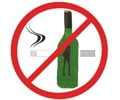Researchers have found that a single counseling intervention that includes an exploration of the risk of alcohol use in sexual contexts may have an impact on HIV prevention by reducing sexual risk behaviours. The study is published in the April 15th edition of the Journal of Acquired Immune Deficiency Syndromes. Considerable evidence exists that alcohol use contributes to the spread of sexually transmitted infections (STIs) including HIV.
In townships in Cape Town, South Africa, which are heavily affected by HIV, more than 85% of the places where people meet new sex partners serve alcohol.“In Cape Town, 42% of men and 12% of women receiving STI clinic services report drinking before sex, and the rate of alcohol use before sex jumps to 61% among STI clinic patients who are problem drinkers”, notes Seth Kalichman, from the University of Connecticut, USA, who conducted the study.
In order to focus on the link between alcohol, STIs, and HIV, the US and South African team of researchers sought to study the impact on sexual risk behaviours and alcohol use of a single brief counseling intervention surrounding HIV and alcohol.
In a randomised, controlled trial, 143 attendees at an STI clinic in Cape Town who used alcohol were given a 60-minute experimental counseling session that focused on HIV and alcohol risk, or a 20-minute educational control intervention, consisting of HIV information alone.
The 60-minute intervention included the informational component of the control condition, plus a motivational component based on the World Health Organization's brief alcohol counseling model, and finally a skills-building component focused on behavioral self-management and sexual communication.
Baseline information was collected by audio computer-assisted interviewing. Follow-up sessions were conducted at three and six months after the intervention or control condition. Participants were questioned about their number of sexual partners and condom use in the past month, as well as alcohol and other drug use. Several short questionnaires were also administered, to assess understanding of HIV risk and prevention, HIV-related stigma, intentions of behaviour change, risk-reduction self-efficacy, and expectations of alcohol use.
Overall, the experimental counselling session was associated with more than a 25% increase in condom use and a 65% reduction in unprotected sex over the 6-month follow-up period, with risk reduction significantly greater for the experimental condition than for the control condition at both follow-ups. Condom use at last intercourse exceeded 95% at each follow-up for the experimental condition. Alcohol use in sexual contexts and expectancies that alcohol enhances sexual experiences were also significantly lower for the experimental condition at the three-month follow-up. Other indicators, including HIV knowledge and stigmas, were not significantly different between the groups.
The authors note that it isn’t really possible to generalise these findings to other settings, particularly because of the number of people who refused to participate and the number lost to follow-up, although retention within the trial was 73% at six months. Other limitations of the study included the small proportion of female participants, the lack of blinding to the intervention, and the use of self-report indicators alone as outcome measures.
Moreover, the team questions whether the differences could be due solely to the increased amount of counselling time given to the intervention-group participants. Finally, they note “the lack of sustainability of the alcohol outcomes suggests that the sexual risk reduction behaviour changes may also deteriorate over time and indicates the need for more intensive alcohol risk reduction intervention components and maintenance intervention strategies”.
“Risk reduction counselling is relatively inexpensive when delivered to individuals at greatest risk and is available now for use in clinical settings”, the report notes. Thus, a similar brief intervention could be widely disseminated via such clinics, which serve people at highest risk of HIV infection.
“This intervention may be particularly useful because it can be delivered by non-professional counsellors with minimal training,” say the authors, noting such counselling could bolster other prevention strategies such as microbicide use.
Changing sexual risk behaviours in the long term among people at greatest risk “requires multilevel intervention strategies that address individual behaviour change and also change the behavioural context and social milieu”, the authors conclude. Research is urgently needed on community-level interventions for supporting risk reduction in drinking places such as shebeens and taverns, in parallel with risk reduction counselling for high-risk drinkers in southern Africa, they suggest.
Source-Generef.com
SRM/V











